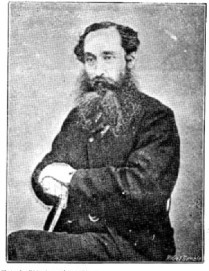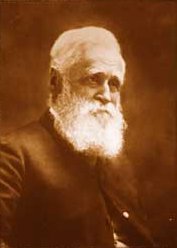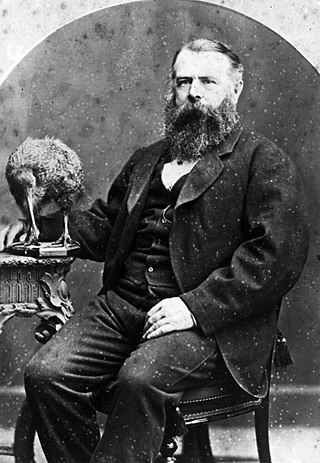Related Research Articles

William Sefton Moorhouse was a British-born New Zealand politician. He was the second Superintendent of Canterbury Province.

Sir James Martin, QC was three times Premier of New South Wales, and Chief Justice of New South Wales from 1873 to 1886.

The 1866 New Zealand general election was held between 12 February and 6 April to elect 70 MPs to the fourth term of the New Zealand Parliament.

The 1871 New Zealand general election was held between 14 January and 23 February to elect 78 MPs across 72 electorates to the fifth session of the New Zealand Parliament. 41,527 electors were registered.
Akaroa was a New Zealand electorate. It was located in Banks Peninsula, Canterbury, and named after the town of the same name. One of the original 24 electorates, it existed from 1853 to 1893.

Thomas Henry Potts was a British-born New Zealand naturalist, ornithologist, entomologist, and botanist. He also served in the New Zealand Parliament from 1866 to 1870.

Sydney is an electoral district of the Legislative Assembly of the Australian state of New South Wales in Inner Sydney.
The Division of Flynn is an Australian Electoral Division in Queensland.
East Sydney was an electoral district for the Legislative Assembly, in the Australian colony of New South Wales created in 1859 from part of the Electoral district of Sydney City, covering the eastern part of the current Sydney central business district, Woolloomooloo, Potts Point, Elizabeth Bay and Darlinghurst, bordered by George Street to the east, Boundary Street to the west, and, from the creation of South Sydney in 1880, Liverpool Street and Oxford Street, to the south. It elected four members simultaneously, with voters casting four votes and the first four candidates being elected. For the 1894 election, it was replaced by the single-member electorates of Sydney-King, Sydney-Fitzroy and Sydney-Bligh.
Caversham was a parliamentary electorate in the city of Dunedin in the Otago region of New Zealand, from 1866 to 1908.
Waikouaiti was a parliamentary electorate in the Otago region of New Zealand, from 1866 to 1908.
Mount Herbert was a parliamentary electorate in the Canterbury region of New Zealand, from 1866 to 1870.
Coleridge is a former parliamentary electorate in the Canterbury region of New Zealand. The electorate existed from the 1866 election to 1887.
Pensioner Settlements was a 19th-century parliamentary multi-member electorate in the Auckland region of New Zealand, from 1853 to 1870.
Westland was a parliamentary electorate in the West Coast of New Zealand from 1866 to 1868 and 1890 to 1972. In 1972 the Tasman and West Coast electorates replaced the former Buller and Westland electorates.
Ellesmere was a parliamentary electorate in the Canterbury region of New Zealand. It existed for two periods between 1861 and 1928 and was represented by six Members of Parliament.
Dunedin and Suburbs North was a parliamentary electorate in the city of Dunedin in Otago, New Zealand from 1863 to 1866. It was a multi-member electorate.
Dunedin and Suburbs South was a parliamentary electorate in the city of Dunedin in Otago, New Zealand from 1862 to 1866. From 1863 it was a multi-member electorate.
The 4th New Zealand Parliament was a term of the Parliament of New Zealand.

Mount Herbert / Te Ahu Pātiki is, at 919 metres (3,015 ft), the highest peak on Banks Peninsula, New Zealand. It is south of Lyttelton Harbour with the township of Diamond Harbour at its northern foot.
References
- ↑ "Election". Nelson Examiner. 7 August 1866.